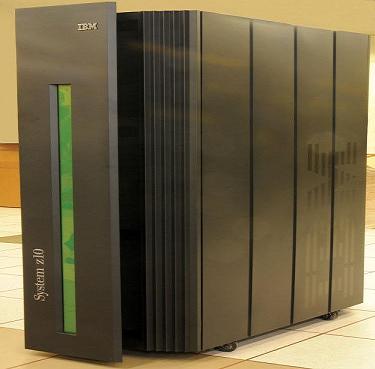| |
JES3
Job Entry Subsystem 3
 Please! Verify all details or
suggestions with the appropriate vendor and / or vendor's manuals. Please! Verify all details or
suggestions with the appropriate vendor and / or vendor's manuals.
The
work environment for JES3 consists of processors and I/O devices. JES3
covers a range of data processing needs, partly because it can
accommodate various combinations of processors and devices. JES3 is a
manager of its environment, so if you understand that environment, it
will be easier for you to understand JES3.
This topic describes the I/O devices used by JES3 and MVS and the following environments in which JES3 runs:
- Single-processor environment
- Multiprocessor environment
- Remote job processing environment
- JES3 networking environment
- APPC environment
A JES3 complex can involve any combination of these environments.
Website
You might choose to enable JES3 as an alternative to the base JES2
element. It also accepts the submission of work for the BCP. Major JES3
functions and design features include:
The interpretation of job control language (JCL) statements
- The disposition of output
- A single system image
- Workload balancing
- Deadline scheduling
- Dependent job control
- Control flexibility
JES3 website
The JES3 Library
- SA22-7540-10 Commands PDF
- SA22-7542-09 Customization PDF
- N/A Data Areas Vol 1 (IATYADA-IATYLCA) PDF
- N/A Data Areas Vol 2 (IATYLCP-IATYSTT) PDF
- N/A Data Areas Vol 3 (IATYSUP-IATY8FB) PDF
- GA22-7548-09 Diagnosis Reference PDF
- GA22-7547-09 Diagnosis PDF
- SA22-7549-09 Initialization and Tuning
Guide PDF
- SA22-7550-09 Initialization and Tuning
Reference PDF
- SA22-7551-06 Introduction PDF
- SA22-7552-10 Messages PDF
Website
JES2 compared to JES3
z/OS concepts
IBM® provides two kinds of job entry subsystems: JES2 and JES3. In many
cases, JES2 and JES3 perform similar functions, but most installations
use JES2.
Both JES2 and JES3 read jobs into the system, convert them to internal
machine-readable form, select them for processing, process their
output, and purge them from the system.
Some principle differences between the two JES systems include:
In a mainframe installation that
has
only one processor, JES3 provides tape setup, dependent job control,
and deadline scheduling for users of the system, while JES2 in the same
system would require its users to manage these activities through other
means. In an installation with a multiprocessor configuration, there
are noticeable differences between the two, mainly in how JES2
exercises independent control over its job processing functions. That
is, within the configuration, each JES2 processor controls its own job
input, job scheduling, and job output processing.
In cases where multiple z/OS®
systems are
clustered (a sysplex), it is possible to configure JES2 to share spool
and checkpoint data sets with other JES2 systems in the same sysplex.
This configuration is called Multi-Access Spool (MAS). In contrast,
JES3 exercises centralized control over its processing functions
through a single global JES3 processor. This global processor provides
all job selection, scheduling, and device allocation functions for all
of the other JES3 systems.
With JES3, installations may decide whether the global JES3 or z/OS
base control program will handle device allocation. With JES2, only the
z/OS base control program handles device allocation.
JES3 differs from JES2 in two main processing areas:
- JES3 exercises centralized control over its job processing
functions. JES2 exercises independent control. With JES3, a single,
global processor controls job, device, and workflow for all processors
in a multi-processor environment.
- JES3 does pre-execution of job setup. JES2 does not do this.
Website
Go to the JES2 page
|
|
Sponsored by
Software Diversified Services™


IBM z10
Home Page
CICS
COBOL
Dictionary
Hints / Tips
Internet
History
Mainframe Videos
Manuals
Programming
Programs
System z Academic Initiative
Sitemap
|





